This post will give overview of bicycle handlebar size standards, in terms of stem mounting area as well as grip mounting area (or bar wrap area for road “drop” bars). Other important dimensions of road bike bars are explained in the post about road bar geometry, while important considerations for flat bars are given in MTB (flat) bars setup post.
TL/DR
For your bars to fit securely, their clamp size (diameter) must match the stem’s clamp size.
How can you measure that and what kinds of standards exist (best to know this before buying)?
1. Measuring important diameters
If handlebars are sought for a stem already owned, look at stem size standards for how to take important measurements. For the handlebars themselves, it is important to measure the following two diameters: stem clamp diameter and grip diameter. Picture 1 shows how to measure the stem clamp diameters of flat and drop bars.
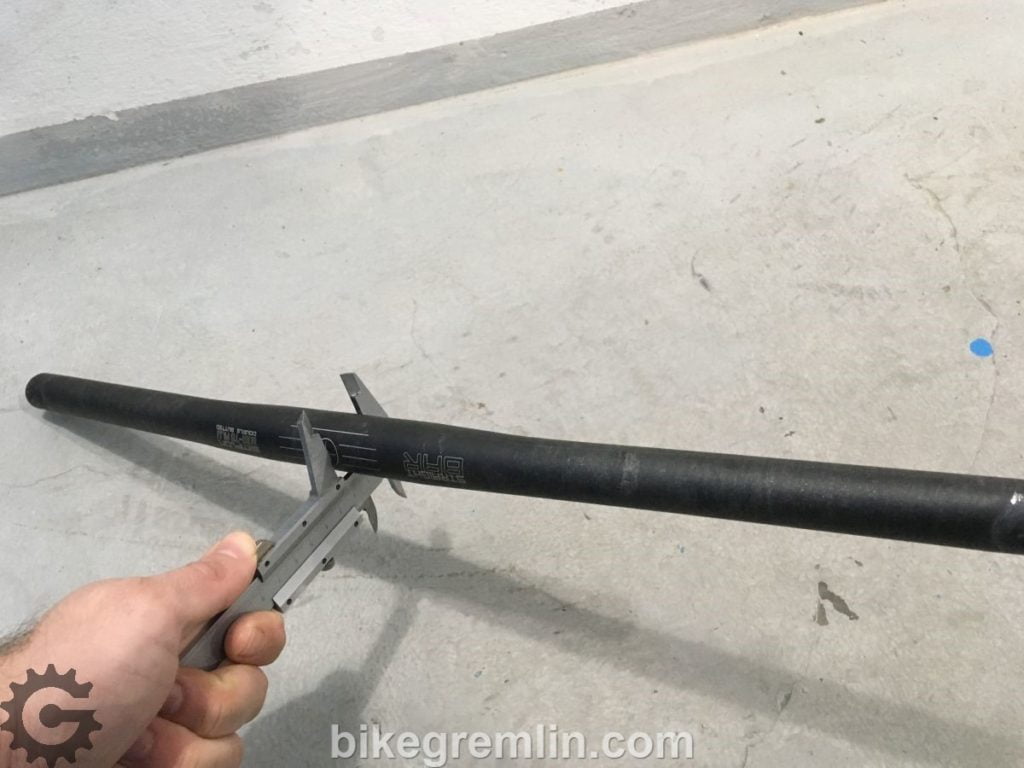
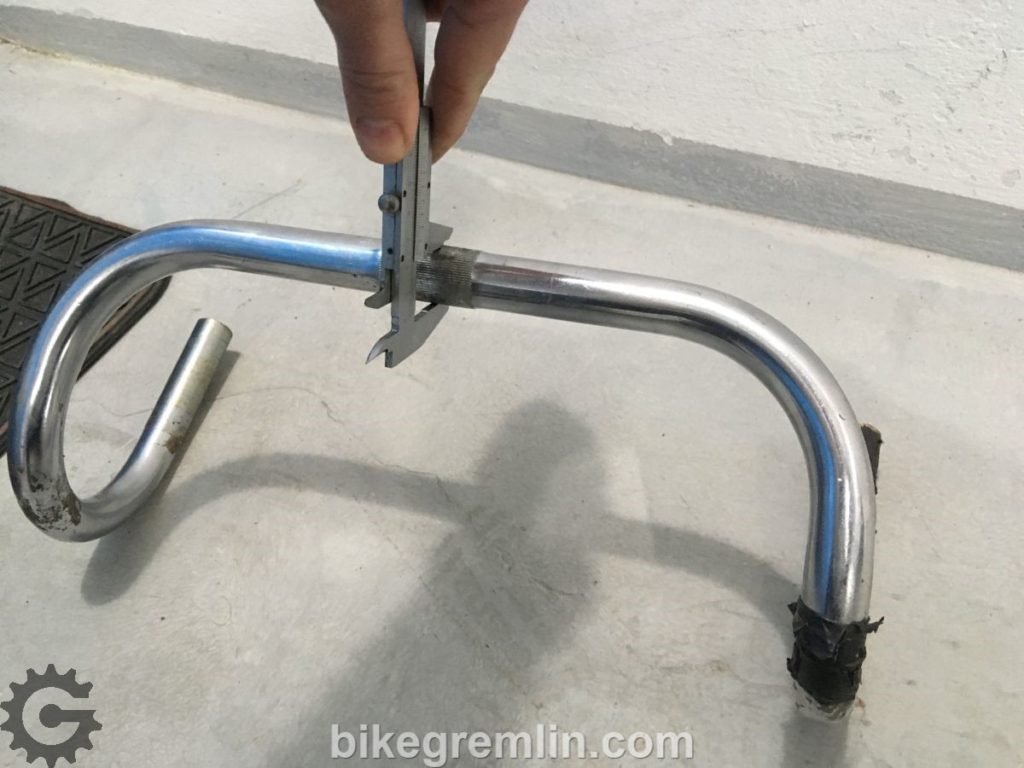
Pictures 1a, and 1b
Measuring the other important dimension, grip diameter, is shown in picture 2.
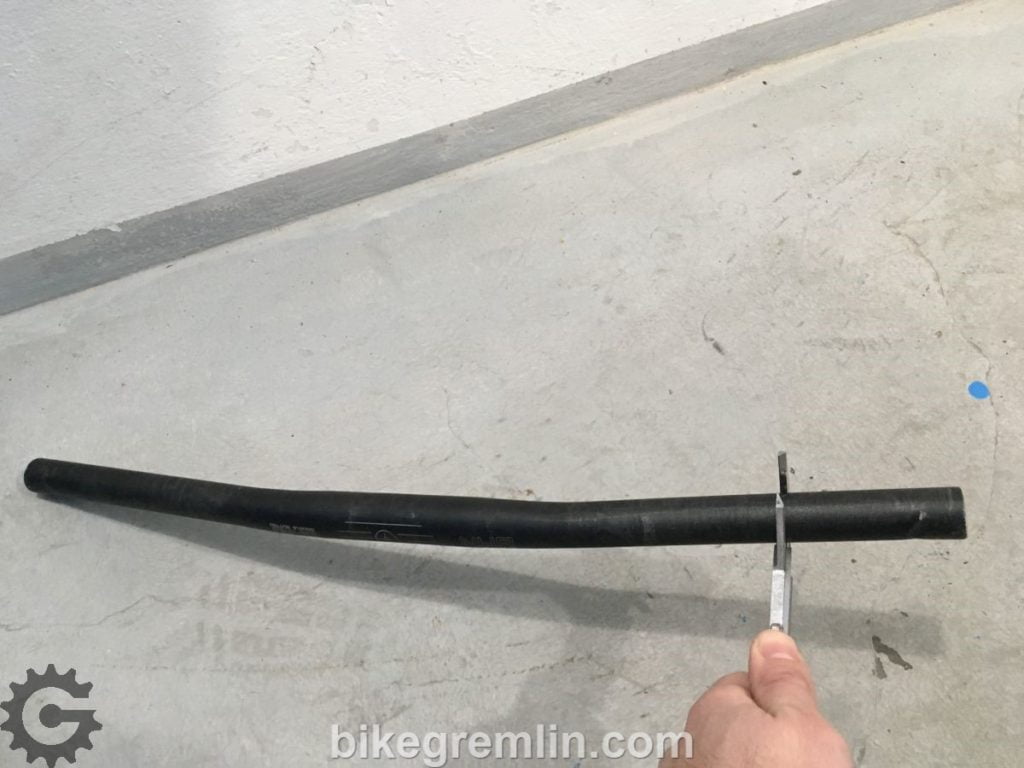
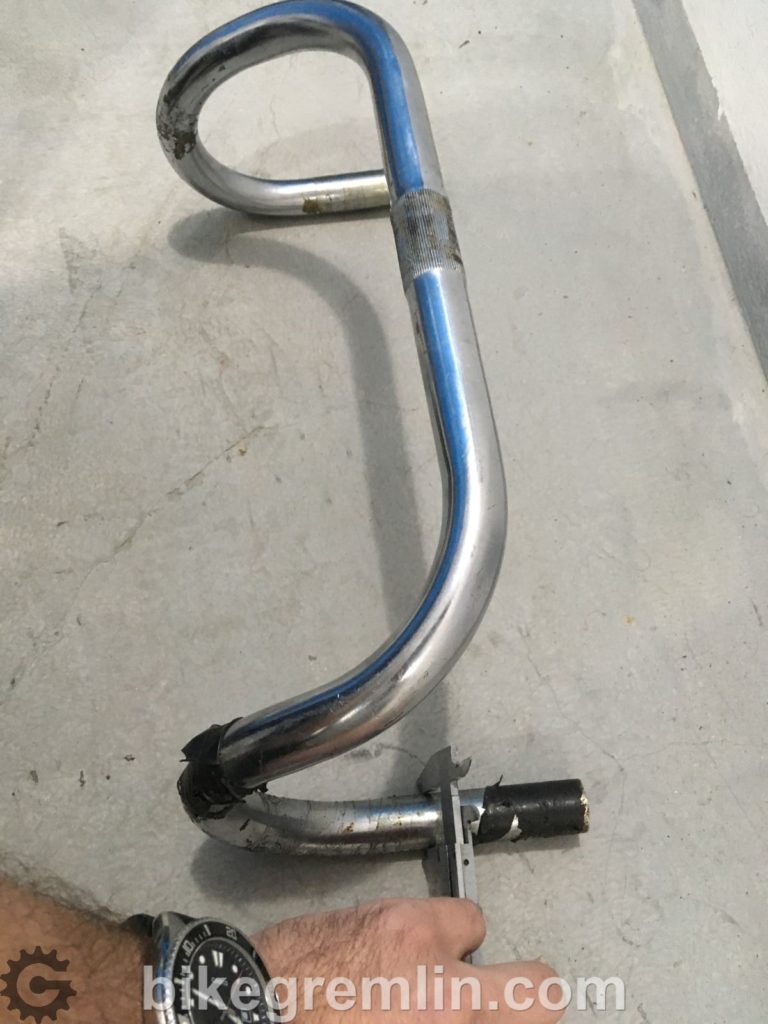
Pictures 2a, and 2b
The pictures 1 and 2 speak for themselves, no need for further explanation. Standard dimension overview is given in the next chapter.
2. Standard bicycle handlebar sizes (diameters)
2.1. Stem clamp diameter standards
Current standards for stem clamp diameter are given in the table 1:
| TABLE 1 | |
| Handlebar attachment diameter – measurement units: mm (inches) | Standard name |
| 22.2 (7/8″) | for steel bars of old MTB and BMX bikes, and some small kids’ bicycles |
| 23.8 (15/16″) | Obsolete British standard common on old British 3-speeds |
| 25 | Obsolete French standard |
| 25.4 (1″) | Standard ISO size, common for bars from the end of the 20th century |
| 26 | Italian road bike (and bar) standard. Obsolete |
| 27 | Titan – obsolete standard |
| 31.7 – 31.8 – depending on how manufacturers round down the inch dimension which is (1 1/4″) | Modern “oversized” standard |
| 35 (1 3/8″) | Easton standard |
2.2. Standard handlebar grip area diameters
There are only two current standard sizes:
- Flat bars have a 22.2 mm (7/8″) grip area diameter.
- Road (“drop”) bars have a 23.8 mm (15/16″) grip area diameter.
2.3. Overview of all (including obsolete) handlebar size standards
Table 2 gives an overview of all the handlebar size standards, with a short explanation of each.
| TABLE 2 | ||
| Stem clamp diameter | Grip diameter | Standard explanation |
| mm (inches) | mm (inches) | |
| 22.2 to 31.8 (varies) | 19 | Small kids’ bicycle handlebars. |
| 22.2 (7/8) | 22.2 (7/8) | Mostly steel bars of BMX and old mountain bikes. |
| 23,8 (15/16) | 22,2 (7/8) | Obsolete old British 3-speed standard, also used on old British steel drop bars. |
| 25 | 23,5 | Obsolete French standard. |
| 25.4 (1) | 22.2 (7/8) | Standard I.S.O. size, used on many flat bar bicycles at the end of the 20th century. Today mostly present on lower end models. |
| 25.4 (1) | 23.8 (15/16) | Standard I.S.O. size, used on many drop bar bicycles at the end of the 20th century. Today a bit less common, mostly used on low end models. |
| 25.8 | 23.8 (15/16) | Unofficial “in-between” size used by some Italian manufacturers so that the bars can be used with both ISO (25.4 mm) and Italian (26 mm) sized stems. |
| 26 | 23.8 (15/16) | Old Italian standard for drop bars. Sometimes also called “road” standard. |
| 26.4 | 23.8 (15/16) | Old Cinelli drop bar standard. They switched to 26 mm in 1998. |
| 27 | 23.8 (15/16) | Titan – obsolete drop bar standard. |
| 31.8 (1 1/4) | 22.2 (7/8) | Modern “oversized” standard for flat bars. |
| 31.8 (1 1/4) | 23.8 (15/16) | Modern “oversized” standard for drop bars. |
| 35 (1 3/8) | 22.2 (7/8) | Easton standard – for flat bar mountain bikes |
Related post – Bicycle stem size standards:

Last updated:
Originally published:

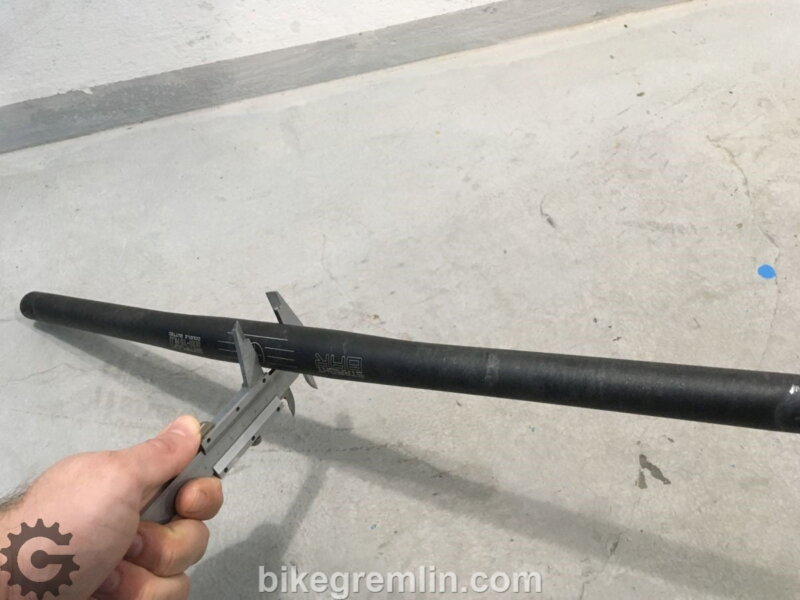
I need a set of white handlebar grips for a non standard handlebar the diameter is 20 mm its on a very small Raleigh childs bike. Any idea where i can purchase these
Hi Pete,
The standard diameter for the small kids’ bikes’ handlebars is 19 mm.
The next size, on bikes for the not very small kids, is the 22.2 mm standard.
(note to self – update the article 🙂 )
I would suggest checking the local bicycle shops – they usually have those, and I think it’s best to support the LBS.
Nonetheless, just in case, there’s always google and online shopping, so here’s what I’ve found:
20-22 mm grips
(Amazon affiliate link)
19 mm inner diameter grips
(Bike24 link – and they’re not white, but orange 🙁 )
Note that I haven’t tried any of these models so can’t 100% confirm they are what they say they are.
The locally available kids’ bike grips are practically exclusively no-name (“Chinese”).
Hi Everyone,
Could you kindly tell me if the “thickness” of the handlebar is universal to all sorts of bikes? And by thickness I mean this https://photos.app.goo.gl/LFk3rs8YwM4yBf598 .
This is a handlebar that simply refused to stay together anymore. It just broke. I would like to know if all handlebars look the same on the inside, or I could find thicker / full ones.
Thank you very much, hope I’m not deviating from the subject here.
Hi Irene,
Wall thickness is not standardized as far as I know. I depends on the materials used, design, and sometimes even quality control.
Generally, there are thicker (and heavier) models. Moderately priced ones (not always the cheapest, but on the less-expensive side) are often stronger, while the very expensive models often have as much material removed as possible to make them as light as possible (and, often, not enough testing, quality control, or strict enough criteria of what the minimum required strength is).
Relja
Hello Relja,
Many thanks for your answer! I was not aware of that drawback at all, that “expensive” does not necessarily mean “stronger”.
So basically that part where the wall is thinner could actually be a factory fault – since the overall wall has a certain thickness, while the breaking point is so much thinner (right where the handlebar would bend towards the grips, to put it this way).
Thanks again, this is food for thought!
Hi Irene,
It could be a manufacturing defect, or a poor design (not designing the bars with enough margin of safety or not considering all the real-world-use loads or the properties of the used material). One of those mistakes doesn’t necessarily exclude the other.
I could write pages about the cycling industry state and safety standards. This is a picture showing what an aluminium fatigue break cross section looks like (fine section where the break started and propagated, next to a rough surface when the material “gave up” and broke completely):
https://upload.wikimedia.org/wikipedia/commons/thumb/9/96/Pedalarm_Bruch.jpg/1024px-Pedalarm_Bruch.jpg
For the light parts built and designed properly, US company called Ritchey (their website link) used to be very good (as in: they know what they’re doing when designing stuff, and have good quality control when manufacturing them). Their WCS component series was awesome (light, but built to take up all the use and abuse of everyday riding) and it is what I look for when going for lighter components. This is the overview of their component tiers:
https://ritcheylogic.com/levels
I don’t know what their current state is – not implying that it’s no longer good, just don’t have enough first hand experience or feedback for their new stuff. Mr Tom Ritchey is still the owner and the “Director of product development.” I have utmost respect for his knowledge and experience (as much as that’s possible without meeting in person or working together), so it should still all be good.
Relja
Hello Relja,
Thank you very much for the details you shared!
I will keep all in mind and do some digging, it’s such a complex argument!
Thanks again,
Have a good week!